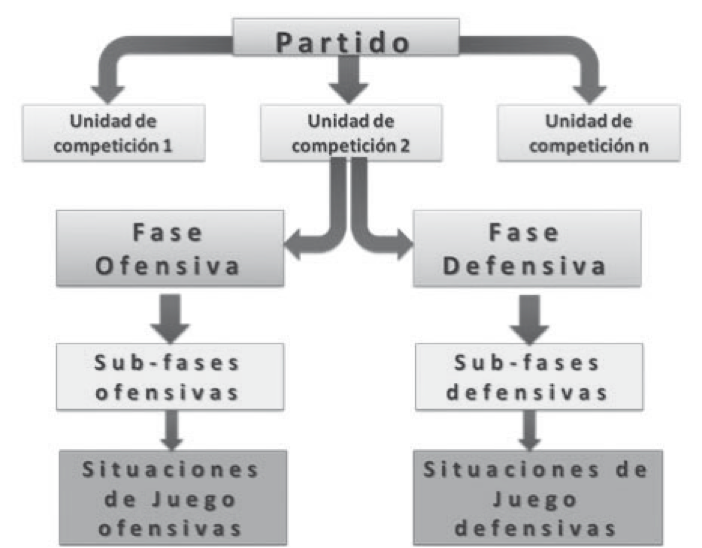During the Offensive and Defensive Phases of a Competition Unit the ball is positioned in different areas of the field. Different GAME SITUATIONS with different collective approaches are different from these trips.
Game situations are football-specific situations, which are usually manifested in a given space and time, provided that the team correctly manifests the BASIC STRUCTURE IN ATTACK and DEFENSE.
Factors that define game situations:
- The play area/demarcation in which the ball is located and controlled. Determine:
- 3 game lanes:
- Right.
- Central.
- Left.
- 3 own play areas:
- Home.
- Progression (It is divided into two sub-zones –A and B-).
- Completion.
- Configuration of each demarcation –according to the game system-:
- 1 player.
- More than one.
- No players.
- 3 game lanes:
- Which player handles the ball (the one in the area or another who has occupied it).
- The orientation the holder gives to the ball/game.
- Where and how the ball has come to this demarcation.
In attack (offensive phase):
- In each Game Situation we must achieve:
- Do not lose possession of the ball, and/or
- Progress to the end zone with options for the finisher to occur.
- In each SJ the positions and displacements of players who do not have the ball and are in the Game Orientation, must allow the holder (appearing in space and achieving a numerical superiority -2:1-) at least 4 options:
- Progress (driving-haggling/wall with output space).
- Go deep (vertical/diagonal).
- Make a change of orientation (horizontal pass).
- Play in security (late pass).
In defense (defensive phase):
- In each Game Situation THAT MANIFESTS THE OPPOSITE we must set the objectives to be developed in relation to:
- The defense attack transition.
- The Sub-phase to which the game situation corresponds.
- The work to be done in each of them.
- The collective aspects established in the DEFENSIVE STRUCTURE designed.
- The execution aspects to be developed by each player in relation to "their opposite".
- Forms of coverage/aids in numerical superiority and/or swaps to be performed.
Let's look at the elements that we have to take into account for both training and competition analysis.

- We determine as the single-final objective of each offensive phase:
- FINISH (Center and/or Finish).
- We determine as the end of each defensive phase:
- RECOVER the ball before the opponent manages to finish.
